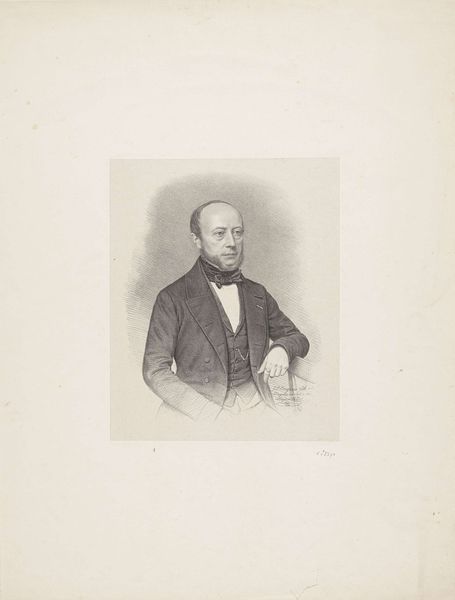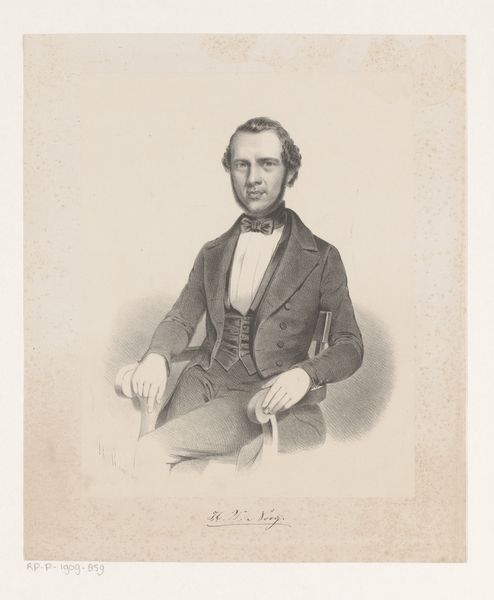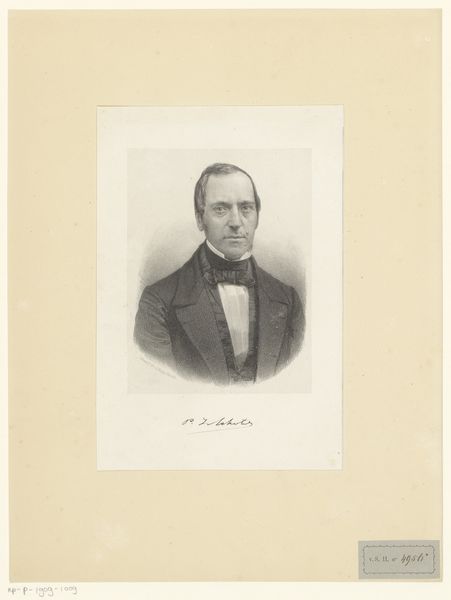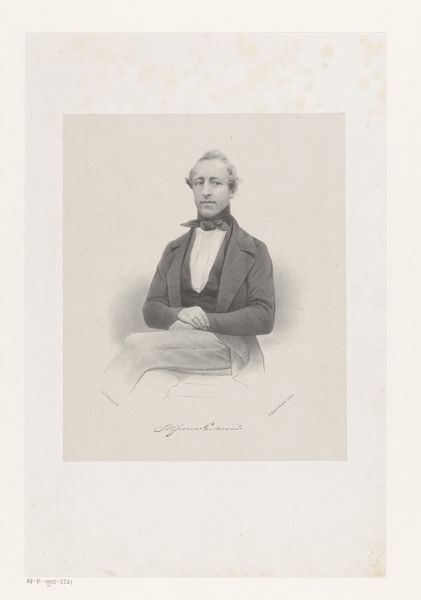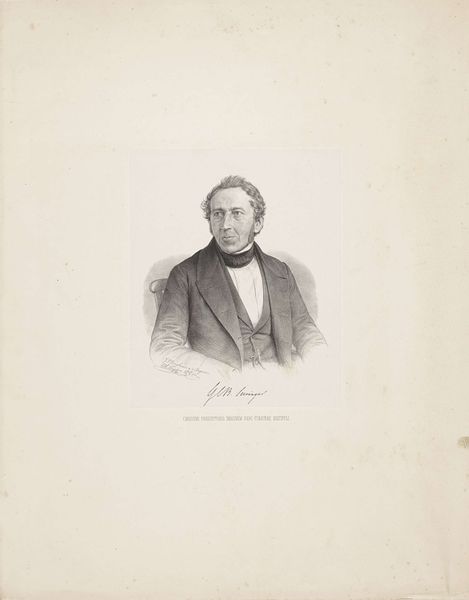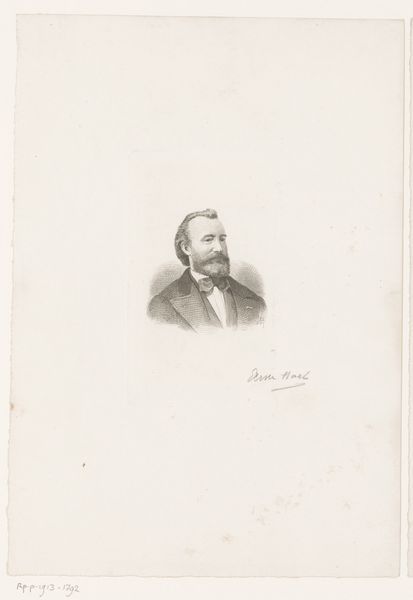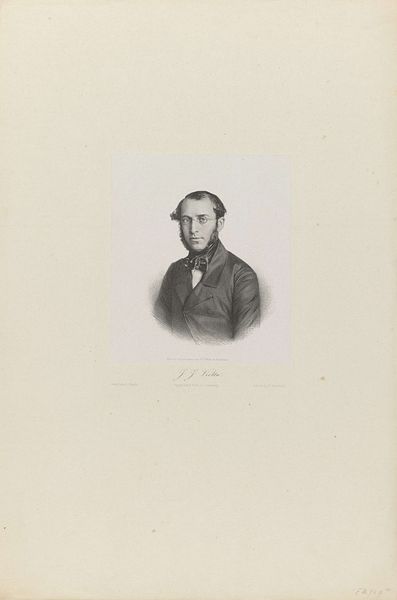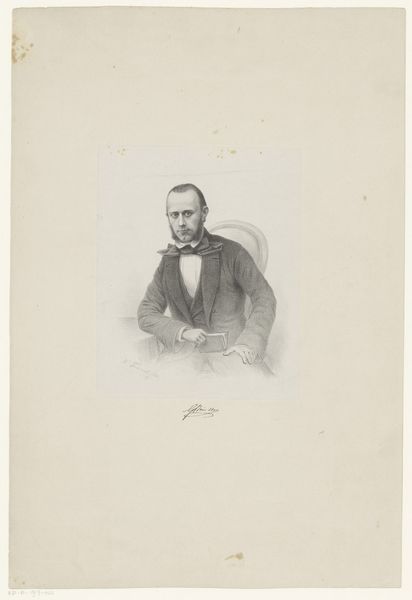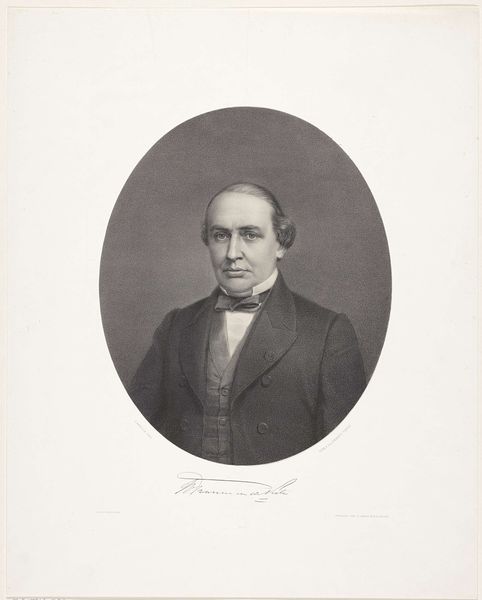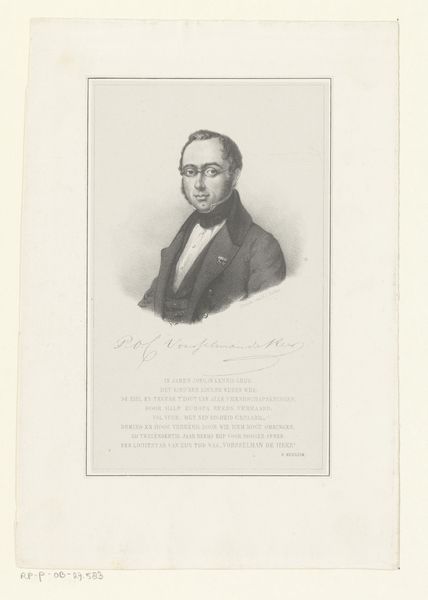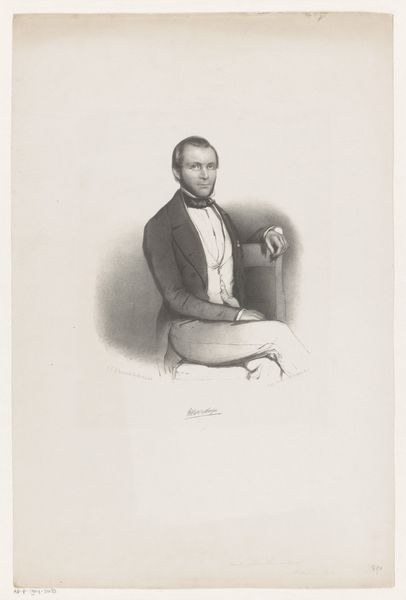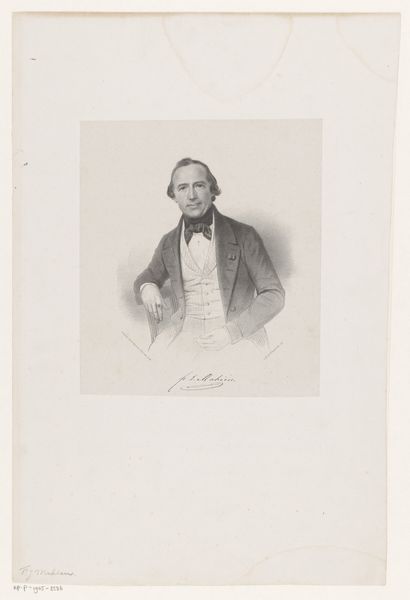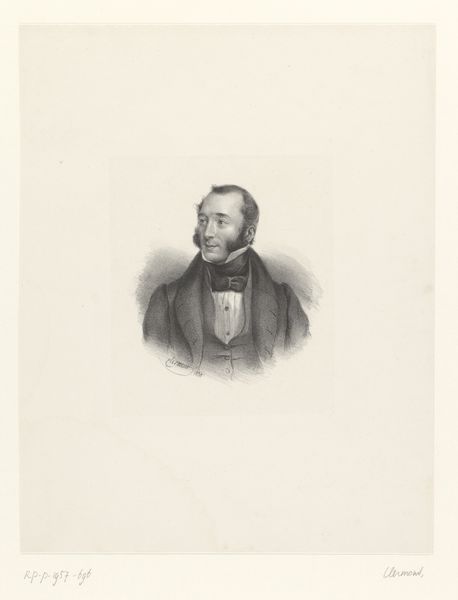
Dimensions: height 545 mm, width 365 mm
Copyright: Rijks Museum: Open Domain
Adrianus Johannes Ehnle created this portrait of S. van Baalen in 1854 using lithography, a printmaking process that democratized image production in the 19th century. Lithography involves drawing an image with a greasy crayon on a stone or metal plate, then treating it with chemicals so that ink adheres only to the drawn areas. This process allows for the creation of multiple identical prints, making images more accessible and affordable. Here, the lithographic technique enables a remarkable level of detail, capturing the texture of van Baalen’s hair and the subtle gradations of light and shadow in his clothing. The rise of lithography coincided with the growth of a middle class eager to consume images, fueling a market for portraits, illustrations, and advertisements. Ehnle's lithograph reflects this shift, where art became increasingly intertwined with commerce and industry. By focusing on the materials and processes behind this portrait, we can better understand its historical context and appreciate the artistry involved in its creation.
Comments
No comments
Be the first to comment and join the conversation on the ultimate creative platform.
